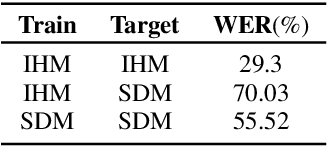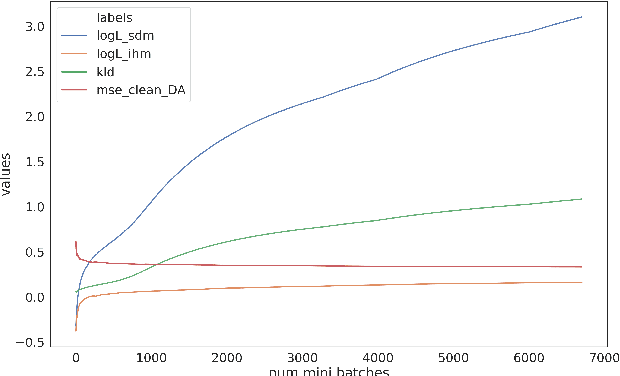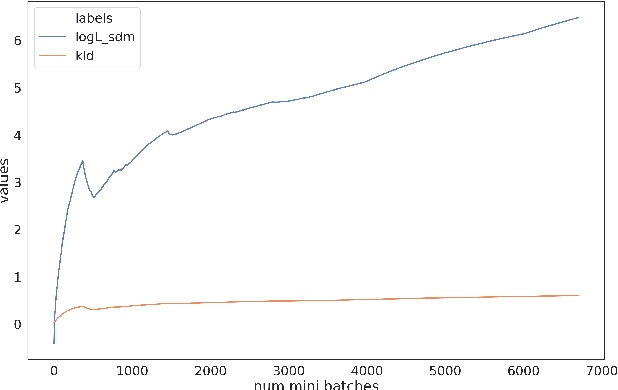Shakti P. Rath
Improved far-field speech recognition using Joint Variational Autoencoder
Apr 24, 2022



Abstract:Automatic Speech Recognition (ASR) systems suffer considerably when source speech is corrupted with noise or room impulse responses (RIR). Typically, speech enhancement is applied in both mismatched and matched scenario training and testing. In matched setting, acoustic model (AM) is trained on dereverberated far-field features while in mismatched setting, AM is fixed. In recent past, mapping speech features from far-field to close-talk using denoising autoencoder (DA) has been explored. In this paper, we focus on matched scenario training and show that the proposed joint VAE based mapping achieves a significant improvement over DA. Specifically, we observe an absolute improvement of 2.5% in word error rate (WER) compared to DA based enhancement and 3.96% compared to AM trained directly on far-field filterbank features.
A Mixture of Expert Based Deep Neural Network for Improved ASR
Dec 02, 2021



Abstract:This paper presents a novel deep learning architecture for acoustic model in the context of Automatic Speech Recognition (ASR), termed as MixNet. Besides the conventional layers, such as fully connected layers in DNN-HMM and memory cells in LSTM-HMM, the model uses two additional layers based on Mixture of Experts (MoE). The first MoE layer operating at the input is based on pre-defined broad phonetic classes and the second layer operating at the penultimate layer is based on automatically learned acoustic classes. In natural speech, overlap in distribution across different acoustic classes is inevitable, which leads to inter-class mis-classification. The ASR accuracy is expected to improve if the conventional architecture of acoustic model is modified to make them more suitable to account for such overlaps. MixNet is developed keeping this in mind. Analysis conducted by means of scatter diagram verifies that MoE indeed improves the separation between classes that translates to better ASR accuracy. Experiments are conducted on a large vocabulary ASR task which show that the proposed architecture provides 13.6% and 10.0% relative reduction in word error rates compared to the conventional models, namely, DNN and LSTM respectively, trained using sMBR criteria. In comparison to an existing method developed for phone-classification (by Eigen et al), our proposed method yields a significant improvement.
A higher order Minkowski loss for improved prediction ability of acoustic model in ASR
Dec 02, 2021



Abstract:Conventional automatic speech recognition (ASR) system uses second-order minkowski loss during inference time which is suboptimal as it incorporates only first order statistics in posterior estimation [2]. In this paper we have proposed higher order minkowski loss (4th Order and 6th Order) during inference time, without any changes during training time. The main contribution of the paper is to show that higher order loss uses higher order statistics in posterior estimation, which improves the prediction ability of acoustic model in ASR system. We have shown mathematically that posterior probability obtained due to higher order loss is function of second order posterior and thus the method can be incorporated in standard ASR system in an easy manner. It is to be noted that all changes are proposed during test(inference) time, we do not make any change in any training pipeline. Multiple baseline systems namely, TDNN1, TDNN2, DNN and LSTM are developed to verify the improvement incurred due to higher order minkowski loss. All experiments are conducted on LibriSpeech dataset and performance metrics are word error rate (WER) on "dev-clean", "test-clean", "dev-other" and "test-other" datasets.
 Add to Chrome
Add to Chrome Add to Firefox
Add to Firefox Add to Edge
Add to Edge